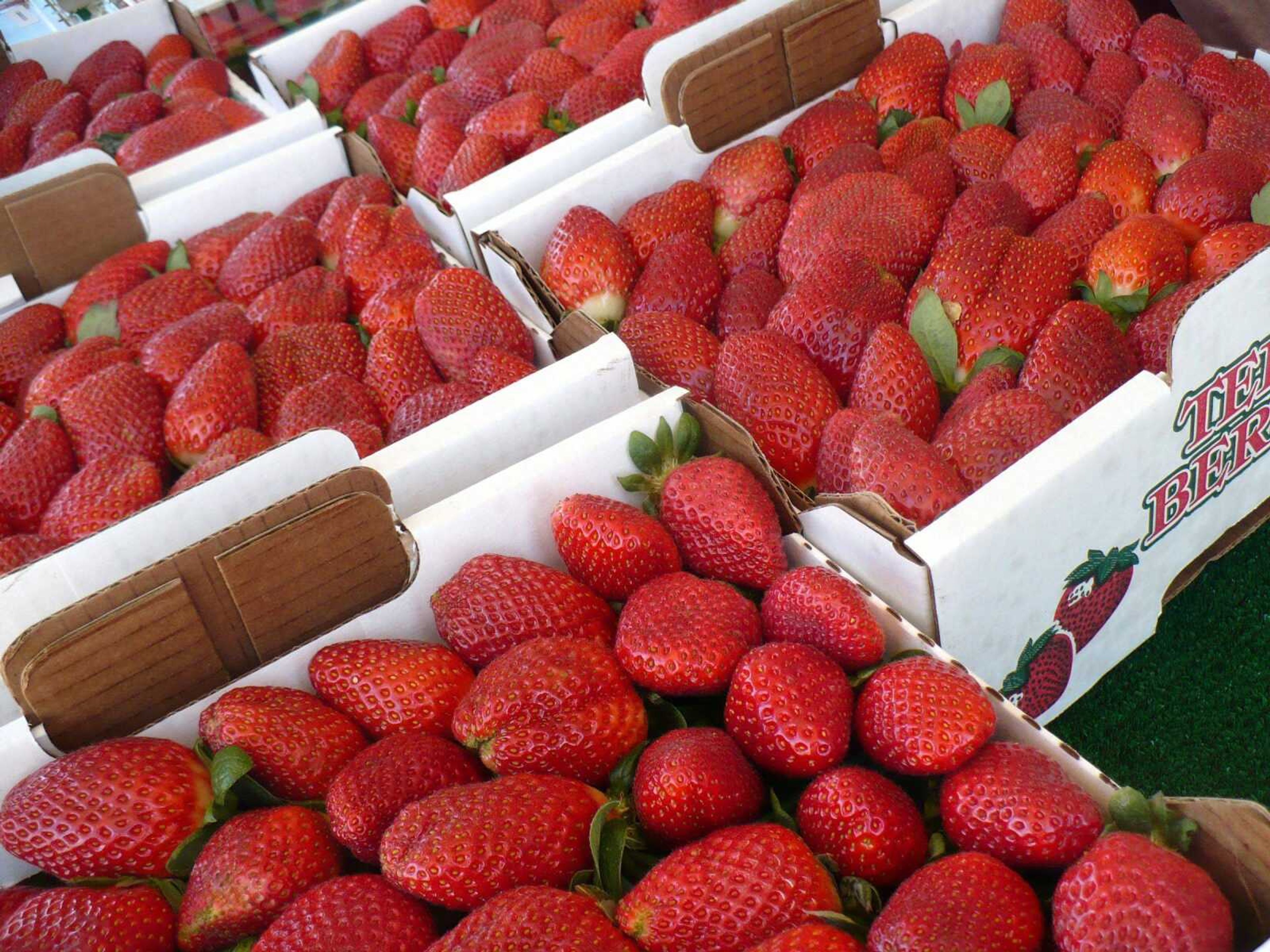A Harte Appetite: Strawberry fields of flavor
I spent some time this month in Southern California, escaping Missouri's winter weather. Out there the sun was shining, the temperature was balmy and everything was green. And as if that weren't enough, you occasionally even bump into a movie star. But of all the advantages attendant to being in California, I think the biggest one may be that the strawberry season there begins in January and lasts practically year-round. ...
I spent some time this month in Southern California, escaping Missouri's winter weather. Out there the sun was shining, the temperature was balmy and everything was green. And as if that weren't enough, you occasionally even bump into a movie star.
But of all the advantages attendant to being in California, I think the biggest one may be that the strawberry season there begins in January and lasts practically year-round. Coastal California's unique setting -- the western ocean exposure produces moderate temperatures year-round featuring warm, sunny days and cool foggy nights -- makes it the perfect place to grow strawberries. In fact, the strawberry yield per acre there surpasses that of any other growing area.
No wonder the state supplies more than 85 percent of the strawberries consumed in this country, about a billion pounds annually, enough to circle the globe some 15 times. In the state's strawberry capital of Oxnard, near where we stayed, workers are already busy harvesting the fruit. A sizable labor force is necessary to tend strawberry fields because the fruit cannot be picked by machine.
California's dominance in the field of strawberries is due largely to research done at the University of California, where scientists were also instrumental in nurturing the state's wine industry to worldwide prominence. Almost half a century ago, pomologists at the university began a strawberry breeding program, developing cultivars that are now grown all over the state.
Though Californians have been growing strawberries for quite some time, they're still relative newcomers to the business. Strawberries have been around for well more than 2,000 years. They were growing wild in Italy as early as 234 B.C. The ancient Romans used them medicinally to combat all manner of ailments, including fevers, infections, kidney stones and gout. At least with respect to gout, they may have been on to something.
Being indigenous to the New World as well as to the Old, strawberries were already established in Virginia by the time the first Europeans arrived in 1588. Turns out it may have been the American Indians who were actually responsible for the invention of strawberry shortcake. They introduced the colonists to a bread made of crushed strawberries and cornmeal, which some food historians claim was the precursor of the celebrated dessert.
In fact, the sorts of strawberries being cultivated nowadays go back only a few hundred years. For centuries before that the only strawberries available were wild. Fortunately, thanks to the California strawberry industry, we no longer have to traipse into the woods to satisfy our strawberry cravings. Moreover, out in the Golden State you can get your fill almost any time you want and you quickly learn that as good as the berries are eaten out of hand or slathered with whipped cream, they have lots of other delicious applications. Californians substitute them for tomatoes in salsa, use them in place of vinegar in salad dressings and even roast them -- applications that reaffirm Dr. William Butler's observation that "doubtless God could have made a better berry, but doubtless God never did."
Strawberry Tostada
In California strawberries are not reserved for dessert. This recipe, adapted from the California Strawberry Commission, mingles the berries with some of the state's other signature produce -- avocados and limes -- to create a flavorful savory dish.
2 and 1/2 cups strawberries, stemmed and quartered
1/2 pound jicama, peeled and diced
1/2 cup chopped cilantro
1 teaspoon minced jalapeno
2 tablespoons lime juice
1 pound pitted avocados, peeled and diced
Salt
6 (6-inch) corn tortillas
Chili powder
6 tablespoons crumbled queso fresco
6 cilantro sprigs
1 lime, cut into 6 wedges
Mix together strawberries, jicama, cilantro, peppers and lime juice. Gently fold in avocados. Season with salt. Toast tortillas in a 400-degree oven until crisp and beginning to brown. Mound 1 cup strawberry mixture in center of each tortilla, sprinkle with chili powder and 1 tablespoon queso fresco, and garnish with cilantro sprig and a lime wedge.
Tom Harte's book, "Stirring Words," is available at local bookstores. A Harte Appetite airs Fridays 8:49 a.m. on KRCU, 90.9 FM. Contact Tom at semissourian.com or at the Southeast Missourian, P.O. Box 699, Cape Girardeau, MO 63702-0699.
Connect with the Southeast Missourian Newsroom:
For corrections to this story or other insights for the editor, click here. To submit a letter to the editor, click here. To learn about the Southeast Missourian’s AI Policy, click here.










